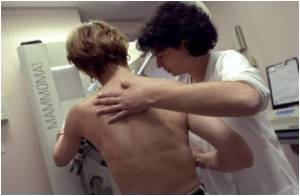Stimulated partial breast irradiation (APBI) brachytherapy, radiation therapy in the localized form is gaining favour as a treatment choice for women with early-stage breast cancer.

"Our study compared the two radiation therapy techniques available to women with early-stage breast cancer. We found that women treated with accelerated partial breast irradiation therapy have a two-fold increased risk for subsequent mastectomy, most likely because of tumor recurrence or local complications, as well as an increased risk for post-operative and radiation-related complications," said Ben Smith, the study’s senior author.
There are numerous types of APBI; the MD Anderson study only looked at the brachytherapy technique, in which a form of radiation treatment involving insertion of a catheter containing a radioactive source to kill breast cancer cells that may remain after lumpectomy surgery. A specialized catheter is surgically inserted into the cavity left behind after tumor removal. APBI brachytherapy is performed a few weeks after a lumpectomy, twice daily over a course of five to seven days.
APBI brachytherapy has grown in popularity over the past decade, since earlier studies showed generally low cancer recurrence rates, though most prior studies have not directly compared the outcomes of APBI brachytherapy to traditional radiation therapy, explained Ben Smith.
The first commercially-available single catheter to deliver partial breast irradiation was approved by the FDA in 2002, escalating APBI’s use, said Ben Smith.
The MD Anderson study was based on analysis of claim forms filed by 130,535 Medicare beneficiaries nationwide, who were diagnosed with cancer between 2000 and 2007.
Advertisement
There are benefits to the practicality APBI offers women, noted Ben Smith.
Advertisement
However, it’s also an invasive procedure with the greater potential for side-effects that are not associated with a non-invasive therapy, such as WBI, noted Smith.
For the retrospective population-based study, the MD Anderson team used Medicare claims to examine the treatment history of 130,535 women age 66 and older diagnosed with early-stage, invasive breast cancer between 2000 and 2007. All of the women were treated with breast-conserving surgery followed by either APBI, delivered by brachytherapy, or traditional radiation therapy.
The researchers analyzed for effectiveness of radiation (defined as the need for a later mastectomy), post-operative complications (infectious and non-infectious), and post-radiation complications (breast pain, fat necrosis and rib fracture).
At five years, the incidence of mastectomy was statistically significantly higher in the APBI brachytherapy-treatment group compared to that of the WBI, 4 percent and 2.2 percent, respectively. APBI brachytherapy was also found to be associated with a higher incidence of acute and late toxicities, compared to those of WBI - infectious complications, 16 and 10 percent, respectively; non-infectious complications, 16 percent and 8 percent, respectively; - and post-radiation complications - five-year incidence of rib fracture, 4 and 4 percent, respectively; fat necrosis, 9 and 4 percent, respectively; and breast pain, 15 percent and 12 percent, respectively.
The researchers note the study’s limits, including that it was not randomized, the relatively-short follow up of patients and limited details regarding tumor characteristics were available.
Given the findings, communication between the patient and her physician is paramount so that a woman with breast cancer can make an informed, personalized decision, said Thomas A. Buchholz, M.D., professor and head of the Division of Radiation Oncology at MD Anderson.
"This is a very important, well-designed study in a large cohort of patients and provides the first comparison of these two popular radiation techniques after breast-conserving surgery," said Buchholz, also an author on the study. "It’s important to note that in both groups, we found a relatively low risk of recurrence. Still, we have a responsibility to discuss potential risks and benefits with our patients, while we await definitive results from randomized trials."
National randomized trials comparing APBI brachytherapy to WBI are ongoing. MD Anderson will continue offering APBI to interested patients in the context of ongoing institutional and multi-institutional clinical protocols, says Buchholz.
Source-Eurekalert













